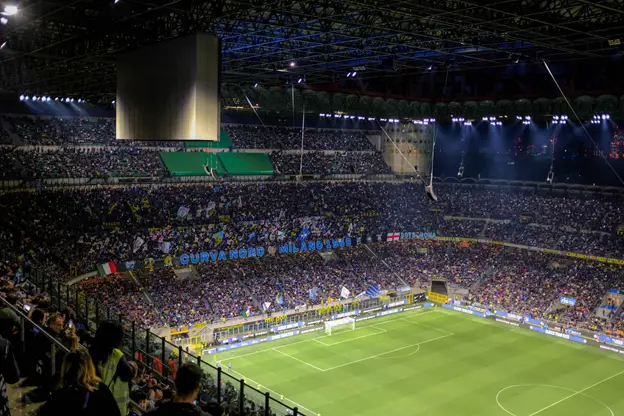A new format has arrived, and the Champions League now unfolds as one panoramic league phase instead of tight little groups. The story reads across a single table, eight fixtures per club, and a clearer sense of progress. For viewers this means fewer dead ends, more variety in opponents, and a cleaner path from autumn narratives to spring knockout drama.
The update also changes how a short evening watch feels. One consolidated table makes quick scanning easier, while rotating matchups keep novelty high. For those who track odds and pre match context, the rhythm mirrors habits learned from soccer betting, where form lines, schedules, and opponent tiers shape expectation. The difference is focus. The league phase rewards light prep and a precise window more than marathon viewing.
What Actually Changed
The old four team groups have given way to a single table with a larger field and eight league phase matches per club. Seeding still matters, yet the mix of four home and four away ties creates a broader sample of styles. Standing checks are simpler. No more juggling parallel mini tables to guess who needs what on the final night. Instead the field compresses toward a shared cutoff, then the bracket forms with clear logic.
Kickoff windows remain familiar, but the stakes mature faster. Each round moves a shared ladder, so one goal in one city can shift the line for many others. Closing nights feel like the stock market finishes. Simultaneous kickoffs create synchronized swings, and highlights tell a coherent story because every clip connects back to the same table.
Why the new phase helps a busy viewer
- One table, fewer tabs
A single ladder anchors context. Results carry obvious meaning, and the next matchday preview reads like a continuation, not a reset - Eight distinct opponents
Variety replaces repetition. Different styles arrive week to week, which keeps tactical curiosity alive and reduces matchup fatigue - Cleaner final night
With everyone tied to one table, late drama is easier to parse. The camera can jump, and the narrative still holds together
Read Also: D’Tigress To Face Germany, France, Others At 2026 Basketball World Cup Qualifiers
Between those structural gains sits a small learning curve. The seeding pots still have difficulty spreading. Reading the fixture list as a strength of schedule map pays off. A challenging early run might hide form that blooms once the calendar softens. Conversely, a soft opening can mask weaknesses that appear when the tier rises.
How To Watch Without Giving Up The Evening
The aim is selective attention. Pick one must watch tie anchored to real stakes, then skim the rest through highlights. A short pre match routine helps. Scan the single table for the playoff line, note two tiebreakers that could matter, and mark a comparable fixture in the same window for context. That is enough to keep a hand on the season while real life keeps moving.
Broadcasters and platforms now lean into modular coverage. Condensed games arrive quickly, angle packages focus on pressing traps or set piece patterns, and team hubs keep lineups, suspensions, and travel notes in one place. With this format, a viewer can treat matchdays like chapters. Read one fully, skim another, and still understand the arc.
A fast viewing playbook that actually works
- Choose one anchor game
Link it to the table line that matters, such as a playoff push or a seed that avoids a brutal draw - Set a timer for the key slice
Opening 20 for game plans, or the last 25 for momentum and substitutions - Use highlights as verification
Watch a short recap after the slice and check two numbers, such as shot quality trend and set piece output - Track one pattern
Pressing height, fullback inversion, or set piece design. Repetition across weeks confirms identity - Write a one line verdict
A tiny note beats a foggy memory and makes the next matchday easier to enter
What To Expect Tactically
The league phase invites a blend of controlled aggression and schedule management. Coaches value early information more than early fireworks. That often means a structured start, a mid match push to claim space, and pragmatic game state logic in the last quarter. Rotation strategy becomes a weekly puzzle. Minutes must be spread without losing cohesion, and away efficiency tends to separate climbers from chasers.
Set pieces keep growing in influence because quick turnarounds compress training time. Corners and free kicks become portable offense, the kind that travels to hostile grounds and survives poor weather. Bench impact also matters more. Squads that can inject pace at minute sixty or change the crossing angle with a like for like fullback swap bank points without risking chaos.
How The Final Stretch Feels
When the calendar closes, the league phase delivers a synchronized finish. Tiebreakers are clearer because every club has lived the same table. Broadcasters can split screen events without breaking narrative, and viewers can follow swings with less guesswork. The playoff bracket forms with less debate and more anticipation, since the field has already been ranked together in public view.
Precision Play: Closing Read
The Champions League’s new format simplifies the viewer journey while keeping the edge. A single table, eight varied opponents, and synchronized drama make midweek football easier to follow in short bursts. Treat each round like a chapter, protect attention with one anchor game, and let highlights confirm what the eye already suspected. Precision wins here. A focused plan turns a crowded calendar into a story that actually fits a normal week.








